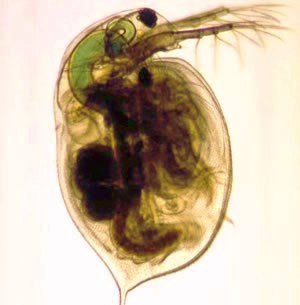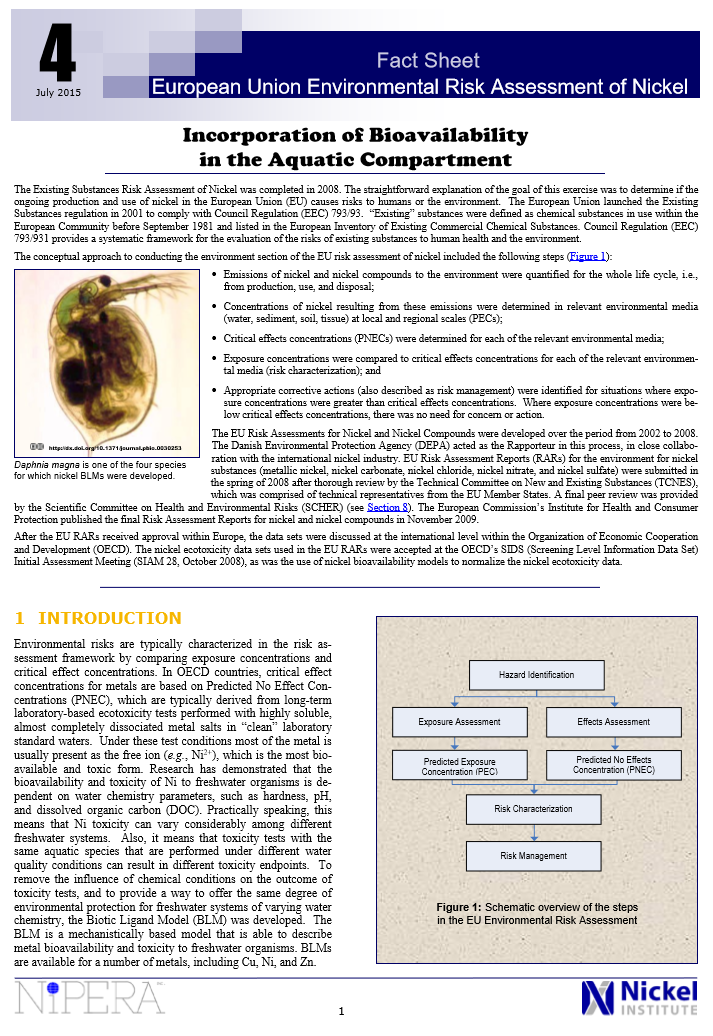The correction for bioavailability is applied to the effect concentrations (NOECs or EC10 values) in the nickel aquatic toxicity database (see Fact Sheet 1).
The following steps need to be accomplished in order to incorporate bioavailability for the derivation of ‘bioavailability-based’ PNECs of Ni for the freshwater compartment (Figure 3).
The first step in using a toxicity related bioavailability model (i.e., the BLM) is the determination of a critical biotic ligand accumulation ([Ni]biotic ligand critical1) calculated from the experimentally generated organism specific toxicity values ([Ni]dissolved2) the ecotoxicity database. Organism-specific bioavailability models should be used as much as possible for that purpose (see Section 3 for further guidance).
In the second step of the approach each organism specific critical biotic ligand accumulation ([Ni]biotic ligand critical3) is translated into a critical bioavailable dissolved concentration ([Ni]bioavailable, dissolved) for a specific area under investigation characterized by a specific set of water-quality conditions (DOC, Ca2+, Mg2+, and H+).
Subsequently, these critical bioavailable dissolved concentrations ([Ni]bioavailable, dissolved) are further used to calculate the bio-available PNECbioavailable dissolved4 values according to the approach described in Fact Sheet 1.
Incorporation of the bioavailability concept using the chronic BLMs will result in the derivation of different Species Sensitivity Distributions (SSDs) and PNEC values for the freshwater environments under assessment. An overview of the SSDs derived for the different selected eco-regions in Europe as defined in Fact Sheet 1 is provided in Figure 4.
The water chemistry and median HC5/PNEC values calculated for the different selected eco-regions in EU surface waters are summarized in Table 2. The PNEC values for Ni in common EU surface waters vary between 3.6 and 21.8 µg/L.
1 Biotic ligand = the toxicologically relevant receptor within the organism. When a critical Ni concentration is achieved at the biotic ligand, its function is disrupted, and toxicity ensues. In freshwater fish, the gill has been determined to be the biotic ligand: when sufficient metal accumulates within gill proteins that are responsible for maintaining physiologically critical levels of essential cations like Ca, Na, and K, systemic toxicity occurs. For other organisms like cladocerans, the biotic ligand is conceptually the same.
[Ni]biotic ligand = Ni concentrations accumulated at the biotic ligand. These concentrations can be calculated using the BLM.
[Ni]biotic ligand, critical = Ni concentrations at the biotic ligand beyond which toxicity occurs.
2 [Ni]dissolved = dissolved Ni concentrations as gathered in the Ni toxicity database beyond which toxicity occurs.
3 [Ni]bioavailable, dissolved = dissolved Ni concentrations that are necessary to reach [Ni]biotic ligand, critical in a specific water. Water quality parameters that affect Ni dissolved concentrations (e.g., DOC) and that compete with Ni for accumulation at the biotic ligand (e.g., Ca2+, Mg2+, and H+) are used to determine the critical dissolved concentration that corresponds with [Ni]biotic ligand, critical for a specific water. These concentrations can be calculated using the BLM.
4 PNECbioavailable, dissolved = integration of normalized EC10/NOEC values from the aquatic Ni toxicity database via the SSD (see Fact Sheet 1).

